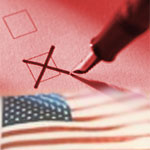This election year’s hard-fought presidential race has brought increasing focus on the credibility and methodology of polls that could have implications for politics, but also for business forecasting, according to Wharton faculty. With growing uncertainty about the value of polls, new ways to predict election outcomes – including the use of aggregate poll results, expert opinion surveys and betting markets – are getting a closer look. “My guess is that polls are the least accurate way of gauging an election,” says one Wharton marketing professor.

Sign up to stay informed about our latest article releases.